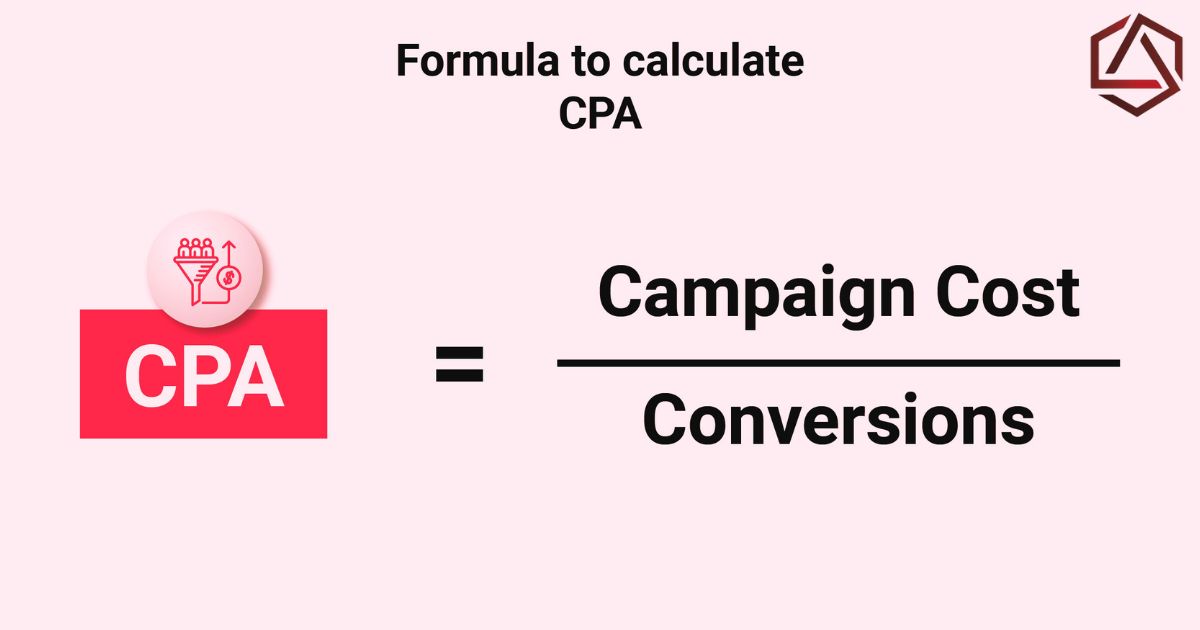
What is Cost Per Acquisition (CPA)?
- Post author:Syeda Sana Fatima
- Post published:January 25, 2024
- Post category:Google Ads
- Post comments:0 Comments

Table of Contents
ToggleCPA (cost per acquisition) is a vital marketing metric for digital marketing.
CPA is a financial metric that is preferred by most because it is directly linked to the revenue you generate effectively.
CPA is a financial metric that is preferred by most because it is directly linked to the revenue you generate effectively.
It’s a compass that works as a guide for businesses to know how much it will cost them to acquire a new customer and to get them to act, like installing or making a purchase.
It’s a compass that works as a guide for businesses to know how much it will cost them to acquire a new customer and to get them to act, like installing or making a purchase.
CPA assists businesses in optimizing their marketing spending in a world of Internet advertising and determining their ROI (return on investment). CPA tracks the cost of acquiring a paying customer from their first contact to their first conversion.

CPA aids companies in determining where they are getting the most profit, improving their marketing spending, and growing. Cost per acquisition is a pricing model for online advice.
This pricing model is preferred on many paid marketing platforms, like PPC, social media (Facebook, Instagram), email marketing, content marketing, etc.
Let’s embark on a journey through the basics of CPA, exploring how to calculate it, understanding its significance and strategies to reduce it, and examining its advantages and disadvantages for publishers.
Now that we know what CAP is, we must know how to calculate it. Through this formula, we can understand the cost of acquiring one paying customer.
CPA= Total cost of campaign/number of conversions

The cost spent on advice, creative production, and any fee related directly to the campaign is considered direct cost.
Expenses like salaries of team workers, software costs, and other operating expenses are considered indirect costs.
Conversions are the desired actions taken by people as a result of marketing. These conversions can come from actions like purchasing, signing up, installing, or any other predetermined aim based on a marketing campaign.
Let’s talk about a hypothetical scenario where the total cost of your marketing is 4000$, which leads to 250 conversions(customers).
CPA= 4000/250
CPA= 16
In this example, the conversion is 16$ in a marketing campaign.
Now, if you have a low Cost per Acquisition means the campaign was quite a success, and if the Cost per Acquisition is high, then the campaign did not bring you profit.
The CPA is a focal point in the landscape of the digital marketing world and a guide for several purposes.
CPA assists marketers by evaluating the cost of acquiring each customer or lead. Once the expense is defined, marketers can make budget-friendly strategies.
The lower the CPA (cost per acquisition), the more profit would be generated by the marketing campaign, which is what makes it a good CPA.
Cost per acquisition also gives them a clear picture of how you optimize your campaign, create adjustments to the marketing campaign, and determine where you should invest now.
For example, if you are running an advertising campaign on the following:
Facebook: CPA: 60$
YouTube: CPA: 50$
Instagram: CPA: 25$
If you look at this example, you can see that the lowest CPA is $25. $25 is a good CAP for this example.
Most marketers prioritize sales and visitor acquisition over cost optimization. However, it is noteworthy that you think about lowering CPA from the start, so you do not have to worry about strategies to improve conversions later. A reduced cost per acquisition can boost your return on investment (ROI) within a brief period.
One way to reduce CPA (Cost per Acquisition) is by optimizing the landing page. Optimizing the landing page means making it more comfortable and easier for your audience. Optimizing the landing page can be done by using a simple technique called A/B testing.
You can create two separate types A, which works towards a specific audience, and B, which works in the most balanced way.
Then, by monitoring CPA (Cost per Acquisition), you can find the most effective one. Also, you can A/B test all your marketing campaigns, video marketing, email marketing, etc.
Ensure that your website has a trouble-free checkout process. Having one lengthy checkout process causes the user to leave the product in the cart. More than half of the users hate the prolonged checkout procedure and like to have reduced steps. Offering more payment options also makes it simple for the customer to pay. Thus, optimizing the checkout process can help you achieve a lower CPA.
The Pareto principle is known as the 80/20 rule, which means 20% effect and 80% result.
Determining the channel with the most conversions will help you understand where you need the most resources to make your marketing campaign a success.
Applying the Pareto Principle after you identify the high-performing channels and allocate the resources accordingly will help us keep a low CPA.
We shell will be discussing the advantages and disadvantages of CPA for publishers:
Understanding and optimizing CPA (Cost per Acquisition) is critical for long-term success in the shifting world of digital marketing.
Regular analysis, testing, and modification are essential for lowering CPA, increasing ROI, and assuring a favorable influence on the bottom line.
Publishers and advertisers must find a balance to build mutually beneficial relationships that fuel digital success. That’s all folks! Catch you on the next blog!
Don’t miss our future updates! Get Subscribed Today!
Don’t miss our future updates! Get Subscribed Today!
©2024. DE Media Solutions. All Rights Reserved.